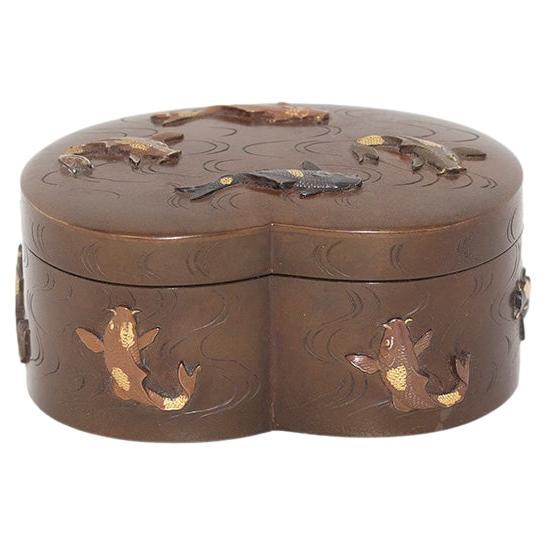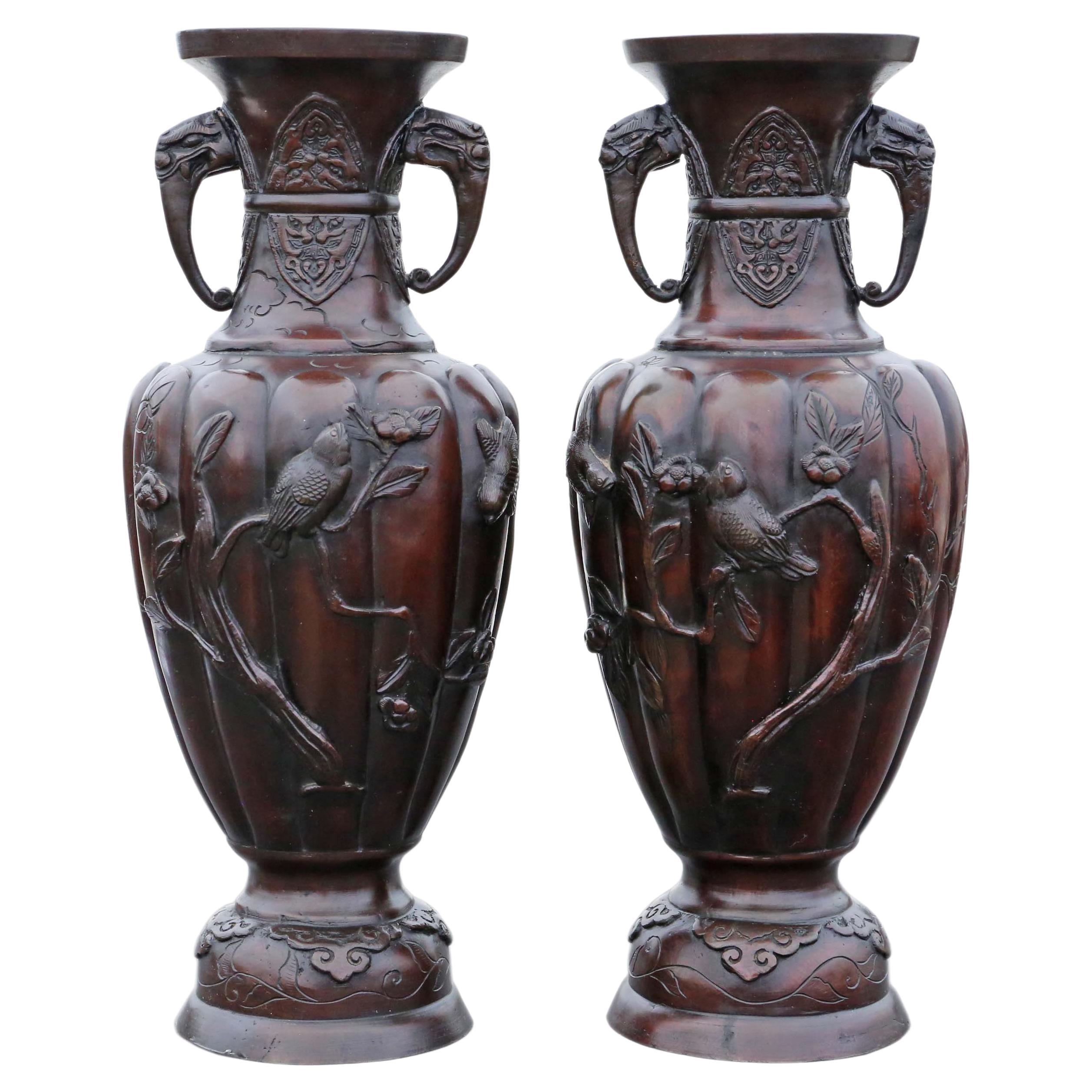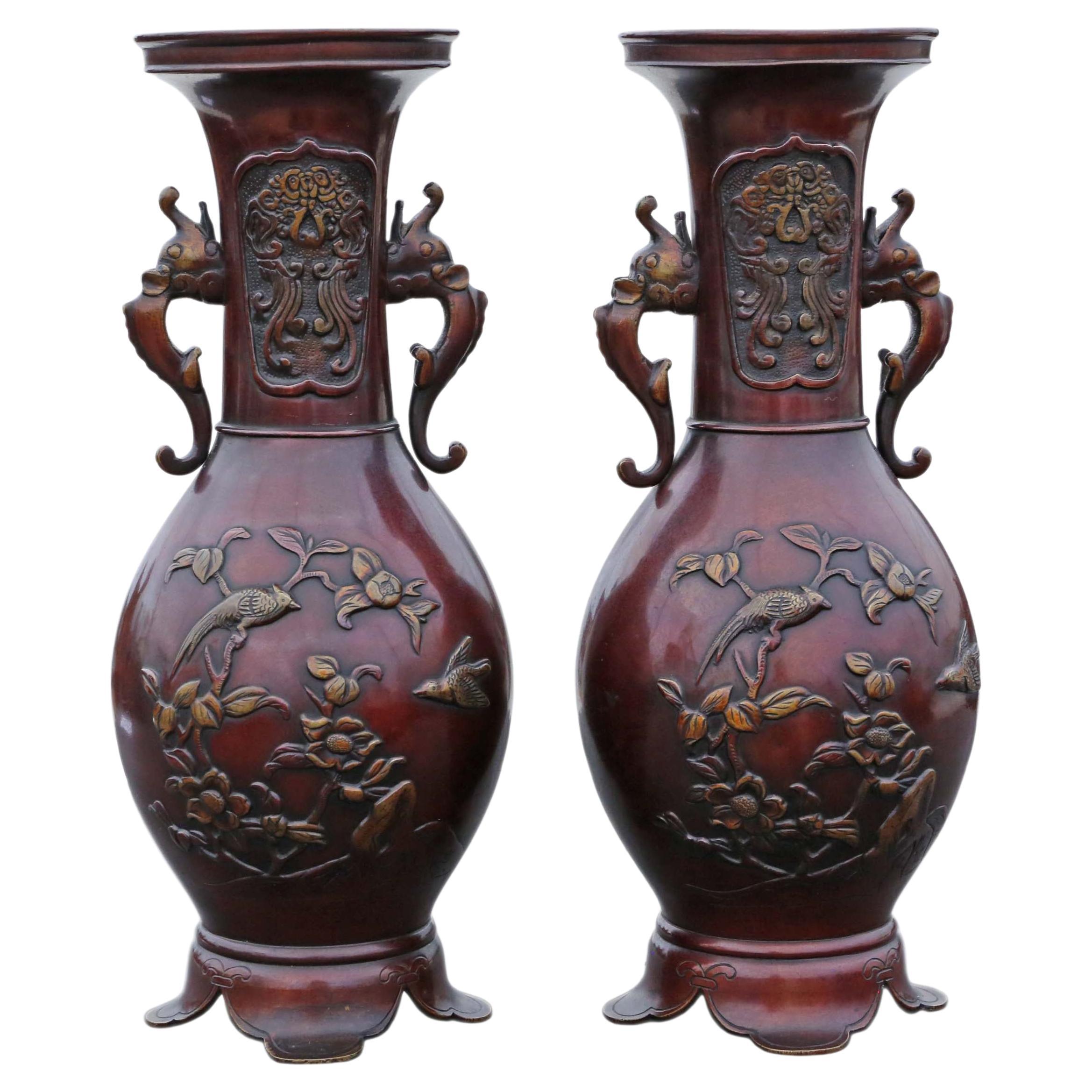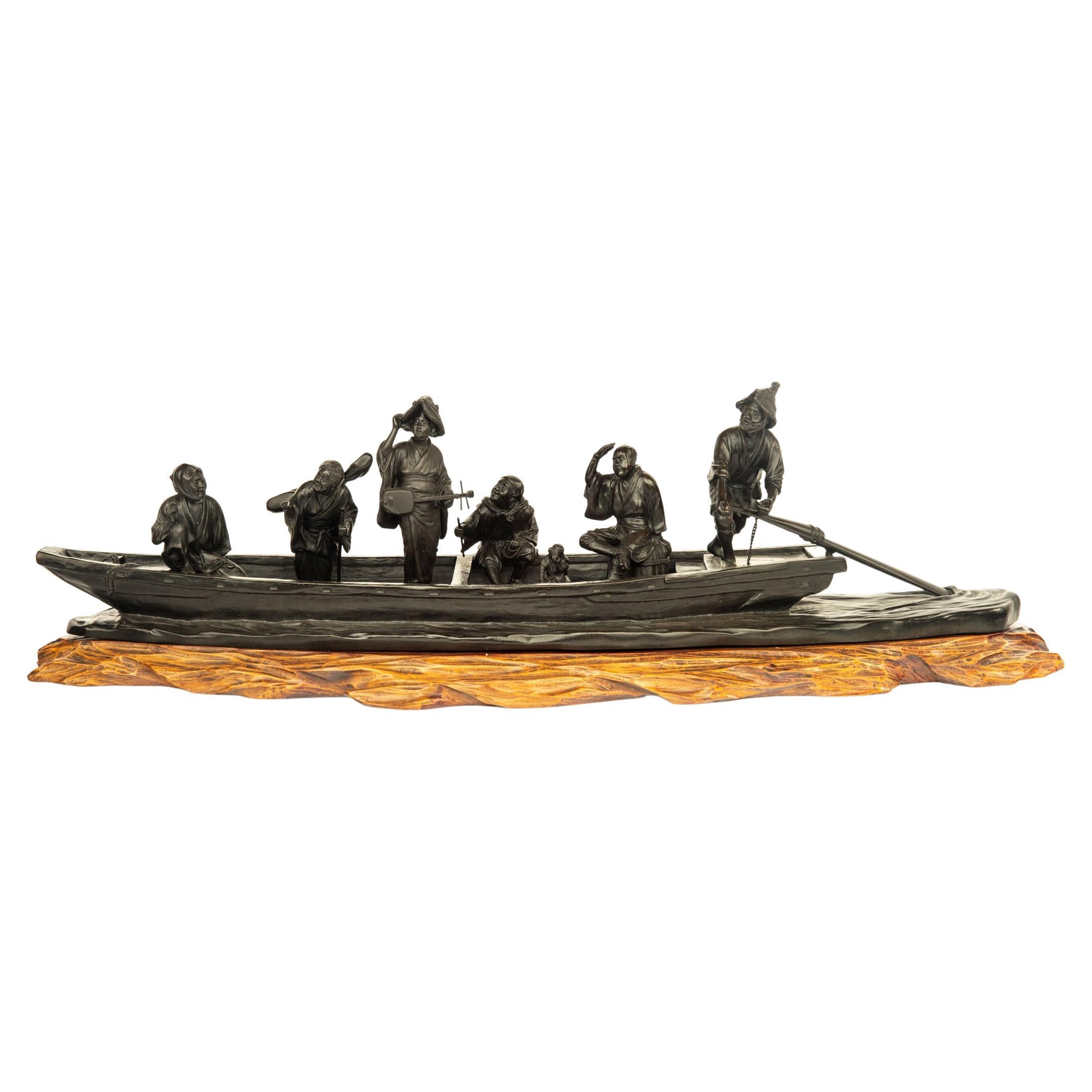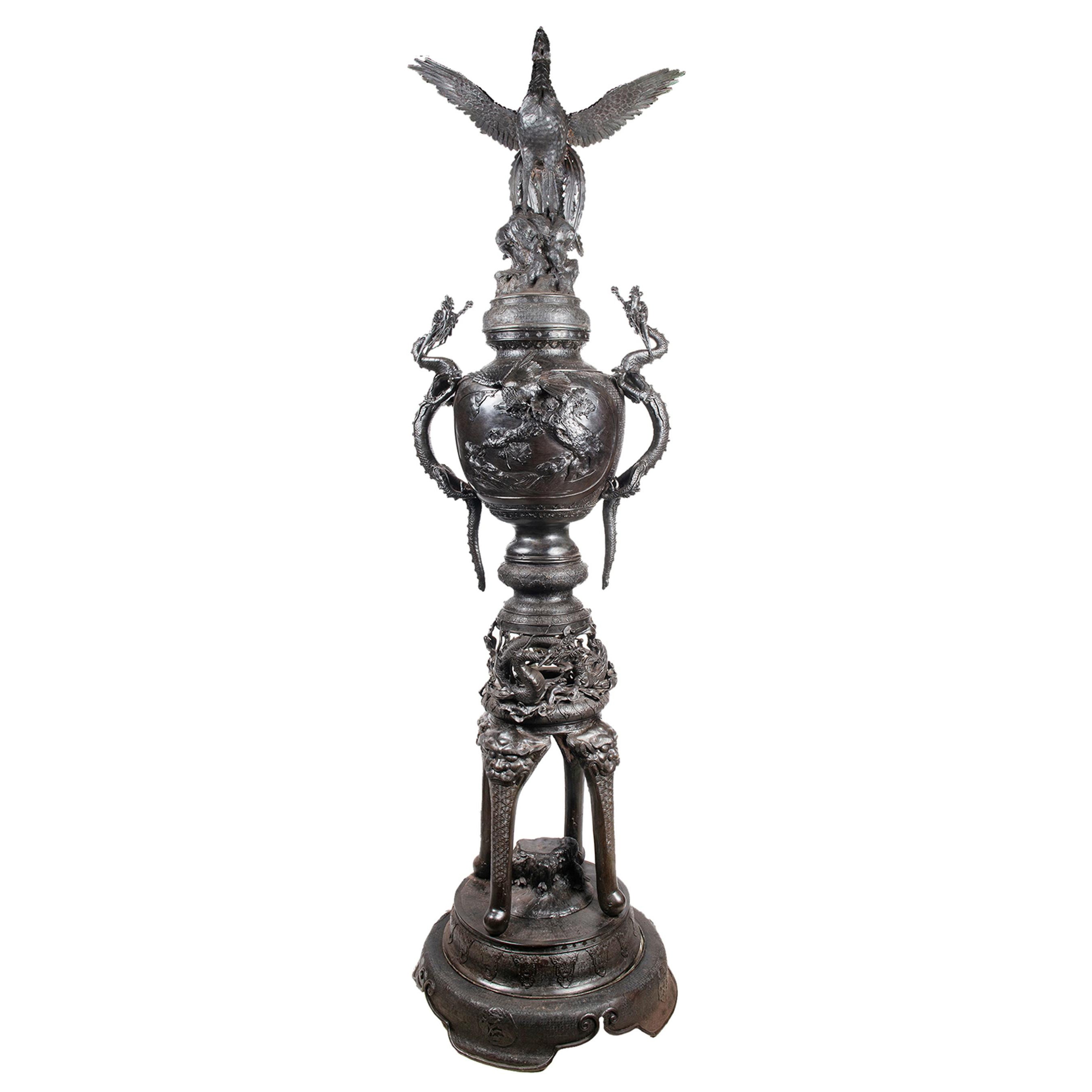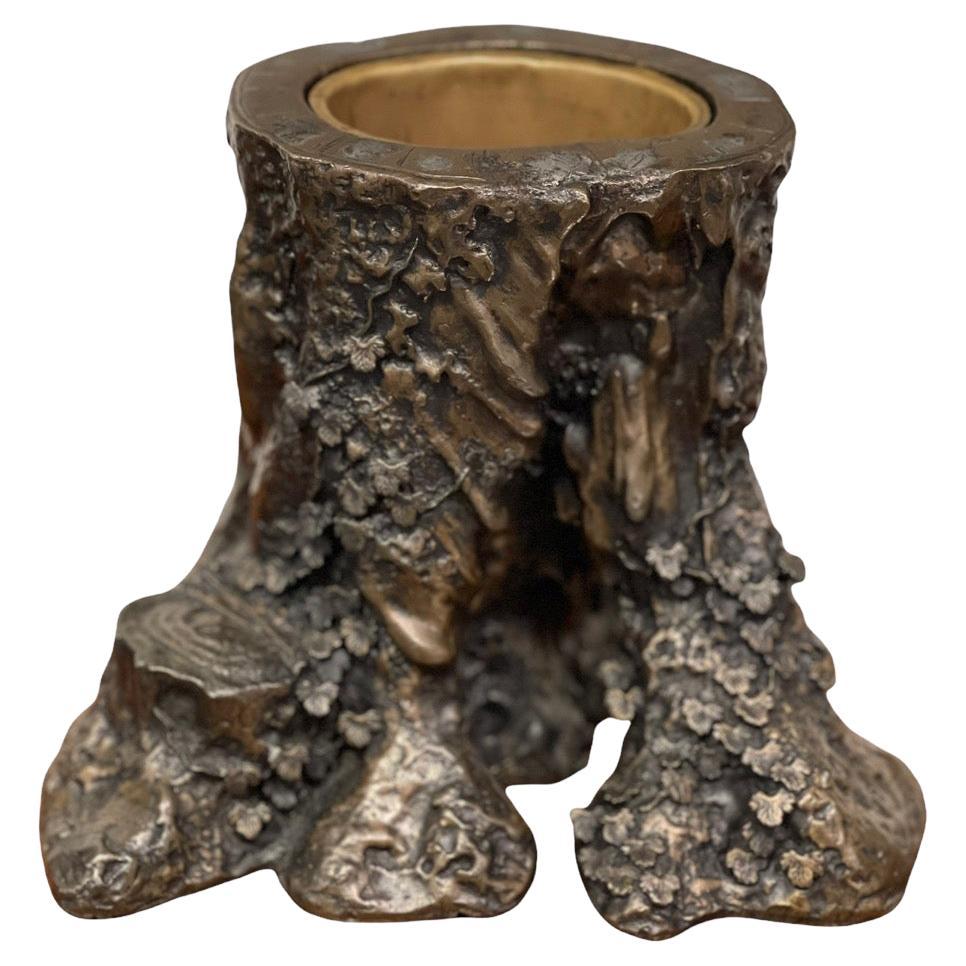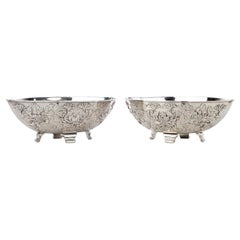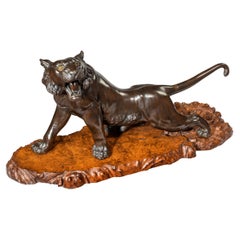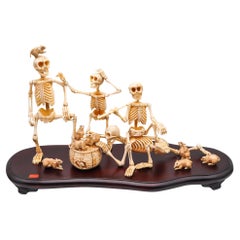
Meiji Period Bronze Group of a Monkey Trainer by Seiya
View Similar Items
Want more images or videos?
Request additional images or videos from the seller
1 of 10
Meiji Period Bronze Group of a Monkey Trainer by Seiya
About the Item
- Dimensions:Height: 21.5 in (54.61 cm)Width: 15.5 in (39.37 cm)Depth: 0.1 in (2.54 mm)
- Place of Origin:
- Period:1900-1909
- Date of Manufacture:circa 1900
- Condition:
- Seller Location:Lymington, GB
- Reference Number:1stDibs: LU97308637773
About the Seller
5.0
Recognized Seller
These prestigious sellers are industry leaders and represent the highest echelon for item quality and design.
Established in 1982
1stDibs seller since 2013
108 sales on 1stDibs
Typical response time: 1 hour
Associations
LAPADA - The Association of Arts & Antiques Dealers
More From This SellerView All
- Pair of Meiji Period Solid Silver Bowls by EigyokuLocated in Lymington, HampshireA pair of Meiji period solid silver bowls by Eigyoku, each of lobed oval form on four scroll feet, deeply embossed with continuous chrysanthemum hea...Category
Vintage 1910s Japanese Meiji Metalwork
MaterialsSilver
$24,592 / set - Large Meiji Period Bronze Tiger by Genryusai SeiyaLocated in Lymington, HampshireLarge Meiji period bronze tiger by Genryusai Seiya, striding forward with teeth bared, the bronze patinated to imitate tiger stripes, with in...Category
Antique 1880s Japanese Animal Sculptures
MaterialsBronze
- Meiji Period Bell Casket by the Nogowa FoundaryLocated in Lymington, HampshireAn outstanding Meiji period mixed metal bell casket by the Nogowa foundary, Of typical form with a shibuichi ground worked in shakudo, silver and gold with a central continuous frieze showing a three-toed dragon amongst roiling clouds and spume-flecked waves, the shoulders with fields of shakudo bosses between triple vertical lines, the knop formed by paired dragons...Category
Antique 1880s Japanese More Asian Art, Objects and Furniture
MaterialsMetal
- Outstanding Meiji Period Mixed Metal Bell Casket by the Nogowa FoundaryLocated in Lymington, HampshireOf typical form with a shibuichi ground worked in shakudo, silver and gold with a central continuous frieze showing a 3-toed dragon amongst roiling clouds and spume-flecked waves, the shoulders with fields of shakudo bosses between triple vertical lines, the knop formed by paired dragons...Category
Antique Late 19th Century Japanese Metalwork
MaterialsMetal
- 19th Century Meiji Period Bronze of a Boy Collecting Sweet Chestnuts by SeiyaLocated in Lymington, HampshireA charming Meiji period bronze of a boy collecting sweet chestnuts by Seiya, he carries a basket and is looking down at an insect crawling over his hand, he is also evidently wearing...Category
Antique 1880s Japanese Meiji Figurative Sculptures
MaterialsBronze
- Showa Period Pale Yellow Cloisonné Vase by TamuraBy TamuraLocated in Lymington, HampshireA Showa period pale yellow cloisonné vase by Tamura, decorated with a single spray of five purple and white orchids with silver foil gin-bari cen...Category
Late 20th Century Japanese Vases
MaterialsEnamel
You May Also Like
- Group of 4 Musicians, Japan Antique, Meiji Period around 1880Located in Munich, BavariaHina Matsuri is celebrated in Japan at the beginning of March. It dates back to the Edo period and is celebrated in the family circle. "Hina Ningyo dolls"...Category
Antique 1880s Japanese More Asian Art, Objects and Furniture
MaterialsTextile, Wood
- Japan 1890 Meiji Period Signed Assembling of Okimono with a Group of SkeletonsLocated in Miami, FLA signed Okimono from the Japanese Meiji period (1868-1912). Very rare, unusual and large sculptural assembling of a dysplaying piece of okimono. Created in Japan during the imperial period of the Meiji (1868-1912). This extraordinary piece okimono sculpture depict a group of four intricately and realistically rendered carousing males skeletons representations (Gaikotsu) standing in several position. One skeleton is crouched down playing with mouses in the floor. The second is seated resting in the other's back, peacefully smoking opium. The others two are fully standing in interacting position. The entire composition is arranged freely displayed on the wood base including a woven basket, apparently with food and four playfull mouses. There are an extra five mouses in different positions, freely playing around, all of them with the eyes accented with carved black ebony. The composition is displayed on a four-legged free form carved wood platform with an inlaid red plaque engraved with the artist's signature. The level of detail and the quality of the carving is truly exceptional. Has an exact measurements of 216.15 mm by 139.7 mm by 359.41 mm (8.51 x 5.5 x 14.15 Inches). After an extensive collection of data, comparables and references to this piece, we have only been able to find only three okimono sculptures like this, with similar themes and the same quality of work. References Note: A similar carving of four skeletons playing an animated game of dominos, signed Shutaro in an inlaid rectangular red plaque, was sold in London by Christie’s South Kensington in October 14 2014, Lot 120 Sale 5546. References Note: A similar carving with four skeletons in an otherwise typical victorian scene of a photographer and three sitters signed Shutaro in an inlaid rectangular red plaque, was sold in Edinburgh at Lyon & Turnbull in November 7, 2018. References Note: A similar carving with five skeletons seated, playing cards and drinking, was sold in London by John Nicholson Fine Art on September 26, 2018. Meiji period, is an era of Japanese history that extended from October 23, 1868 to July 30, 1912.The Meiji era was the first half of the Empire of Japan, when the Japanese people moved from being an isolated feudal society at risk of colonization by Western powers to the new paradigm of a modern, industrialized nation state and emergent great power, influenced by Western scientific, technological, philosophical, political, legal, and aesthetic ideas. As a result of such wholesale adoption of radically different ideas, the changes to Japan were profound, and affected its social structure, internal politics, economy, military, and foreign relations. The period corresponded to the reign of Emperor Meiji. It was preceded by the Keio era and was succeeded by the Taisho era, upon the accession of Emperor Taisho. Okimono, is a Japanese term meaning for display an ornament; art object; or decorative object, usually displayed in a tokonoma or butsudan "Buddhist altar". It is an ornament or figure, especially one placed in a guest room. An okimono may be a small Japanese carving...Category
Antique 1890s Japanese Meiji Sculptures and Carvings
MaterialsWood
- Japanese Meiji Period Koi Carp Bronze BoxLocated in Newark, EnglandJapanese meiji period mixed metal box. The box formed in a kidney shape decorated with swimming koi carp fish throughout. Each koi with intricate detailing wi...Category
Antique Early 1900s Japanese Meiji Metalwork
MaterialsMetal, Gold, Bronze
- Antique Very Large Pair of Japanese Bronze Vases Meiji PeriodLocated in Wisbech, CambridgeshireAntique very large pair of fine quality Japanese bronze vases C1900 Meiji Period. Would look amazing in the right location. Rare large size and design. Overall maximum dimensi...Category
Antique Early 1900s Japanese Metalwork
MaterialsBronze
$1,839 Sale Price / set20% Off - Antique Very Large Pair of Japanese Bronze Vases Meiji PeriodLocated in Wisbech, CambridgeshireAntique very large pair of fine quality Japanese bronze vases C1910 Meiji Period. Would look amazing in the right location. Rare large size and design. Overall maximum dimensi...Category
Vintage 1910s Japanese Meiji Metalwork
MaterialsBronze
$1,839 Sale Price / set20% Off - Very Large Japanese Bronze Ferry Boat Okimono by SeiyaLocated in Christchurch, GBAs part of our Japanese works of art collection we are delighted to offer this most unusual large scale Meiji Period 1868-1912, bronze casting of a wooden ferry boat carrying passeng...Category
Antique 19th Century Japanese Meiji Metalwork
MaterialsBronze


